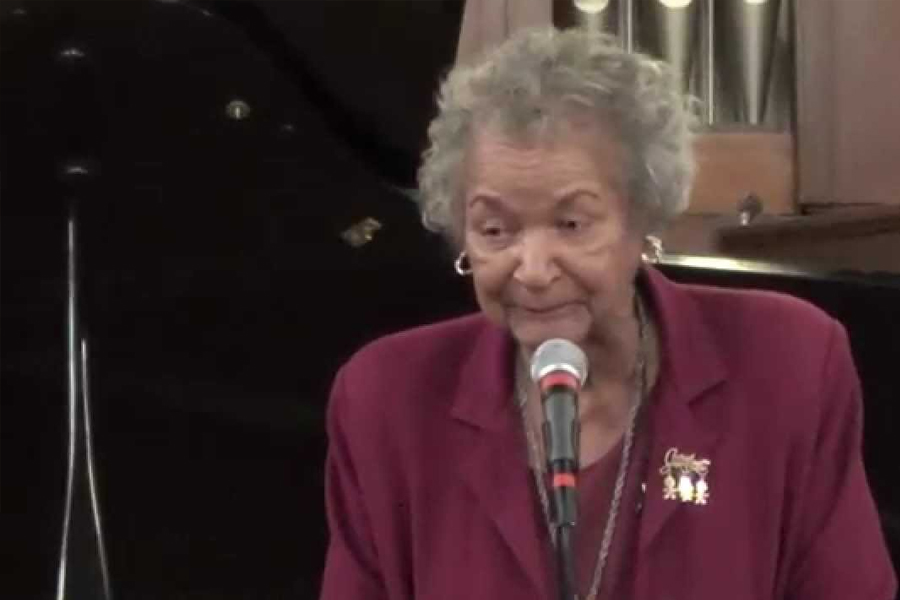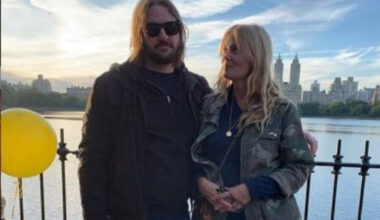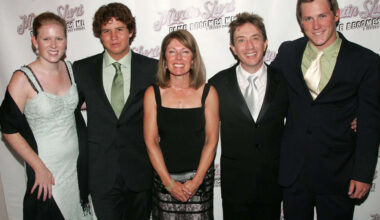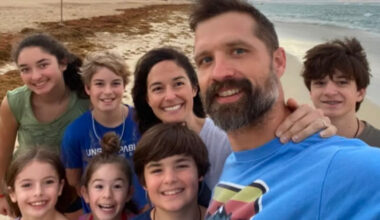Basic Information
| Field | Details |
|---|---|
| Full Name | Ruth Mcbride Jordan |
| Birth Name | Ruchel Dwajra Zylska |
| Birth | April 1, 1921, Poland |
| Immigration | Arrived in the United States circa 1923 (age ~2) |
| Parents | Fishel (Tateh) Shilsky; Hudis (Mameh) Shilsky |
| Siblings | Sam Shilsky (died young); Gladys “Dee-Dee” Shilsky |
| Childhood Home | Suffolk, Virginia |
| Faith | Born into Orthodox Judaism; converted to Christianity as a young adult |
| Marriages | Andrew Dennis McBride (m. 1942–1957, widowed); Hunter Jordan (m. 1958–1972, widowed) |
| Children | 12 children (8 with Andrew; 4 with Hunter) |
| Education | B.A. in Social Work, Temple University (1986) |
| Occupations | Homemaker; secretary; test-tube assembler; overnight typist; social worker |
| Notable Community Work | Co-founded New Brown Memorial Baptist Church (Brooklyn, NY) |
| Death | January 9, 2010, Ewing, New Jersey (age 88) |
| Legacy | Matriarch whose life inspired a classic American memoir; emblem of resilience, reinvention, and faith |
Early Life: From Ruchel to Ruth
Ruth Mcbride Jordan began life as Ruchel Dwajra Zylska in a world that expected silence and obedience from its daughters. Brought to America as a toddler, she grew up in the tidewater heat of Suffolk, Virginia, in a strict Orthodox Jewish home where poverty was palpable and exclusion ordinary. Her father’s rigidity often crossed into abuse; her mother’s disability rendered her vulnerable. The family’s small store set Ruth’s earliest rhythms: long hours, hard work, and a wary eye on the Jim Crow South that ringed their lives.
Isolation became an unlikely tutor. As a Jewish girl in a segregated town, Ruth learned the language of the outsider, which later translated into rare empathy and a refusal to kneel before prejudice. By 17, she chose flight over fear, boarding a northern-bound path to New York City and to herself.
Reinvention in New York: Faith, Marriage, and a New Name
New York offered anonymity and air. There, she crossed thresholds that would have been unthinkable in Virginia: she converted to Christianity, embraced a largely Black church community, and married Andrew Dennis McBride in 1942. The act was radical for its time and place; love and conviction outweighed the world’s censure.
With Andrew, Ruth helped found the New Brown Memorial Baptist Church in Brooklyn—a sanctuary built from conviction and choir notes. They had eight children together before Andrew’s death in 1957 left Ruth widowed and pregnant. Life pressed forward. In 1958 she married Hunter Jordan, a steady presence who purchased a home in Queens and fathered four more of her children before his death in 1972.
Motherhood and the House of Twelve
Her home—sometimes a crowded apartment, sometimes a lean kitchen table balanced on prayer—was the center of gravity. She preached education like gospel and made faith the floorboards on which her children stood. Despite poverty, every child attended college. That statistic is more than a number; it’s a portrait of discipline, hope, and the everyday miracle of getting 12 children out the door, clothed, loved, and ready to read.
Family Roster (Children)
| Birth Order | Name | Parentage |
|---|---|---|
| 1 | Rosetta McBride | Andrew & Ruth |
| 2 | William (Billy) McBride | Andrew & Ruth |
| 3 | Dennis McBride | Andrew & Ruth |
| 4 | Helen McBride-Richter | Andrew & Ruth |
| 5 | Richard McBride | Andrew & Ruth |
| 6 | Dorothy (Dotty) McBride-Wesley | Andrew & Ruth |
| 7 | James McBride | Andrew & Ruth |
| 8 | David McBride | Andrew & Ruth |
| 9 | Judy Jordan | Hunter & Ruth |
| 10 | Henry McBride | Hunter & Ruth |
| 11 | Kathy Jordan-McElroy | Hunter & Ruth |
| 12 | Hunter Jordan Jr. | Hunter & Ruth |
By the time Ruth died in 2010, she was survived by 11 of her 12 children and 23 grandchildren. Her family tree was pruned by loss but lush with achievement.
Work, Faith, and Making Ends Meet
Ruth’s résumé reads like a ledger of determination: church secretary, test-tube assembler in SoHo, overnight typist at a bank, social worker aiding young parents. Jobs came and went in the rhythms of necessity, not prestige. She stretched paychecks across boroughs and years, traded sleep for safety, and never let pride stop her from accepting a hand if it kept the lights on and the library cards current.
The church was her hearth. Prayer, choir practice, Sunday sermons, and potlucks were more than rituals; they were scaffolding. Under that scaffolding, she taught her children to live color-blind in a world obsessed with color, to study as if their lives depended on it, and to keep going when the road narrowed.
Later Years: Degrees, Grandchildren, and a Quiet Radiance
In 1986, at age 65, Ruth earned her degree in social work from Temple University—a late-blooming credential that felt like an encore. She settled in Ewing, New Jersey, gathered her expanding family for holidays, and let time soften some of the wounds she had spent a lifetime outrunning. Her story, once locked away, eventually opened, revealing a woman who had crafted a second life with the audacity of a poet and the stamina of a long-distance runner.
Legacy and Cultural Resonance
Ruth’s life became widely known through the memoir penned by her son, which braided her voice with his and elevated a family history into a national parable. She is now remembered as a matriarch who forged possibility out of constraint, marrying across racial fault lines, raising twelve biracial children during the crucible years of the mid-20th century, and insisting—always—on the sanctity of learning. In recent years, renewed attention to her son’s literary success has cast fresh light on Ruth’s improbable alchemy: a private life that quietly redirected public conversations about identity, race, faith, and the American promise.
Extended Timeline
| Year | Event | Notes |
|---|---|---|
| 1921 | Birth | Born Ruchel Dwajra Zylska in Poland |
| 1923 | Immigration | Arrives in U.S.; family later settles in Suffolk, VA |
| 1938–1939 | Leaves Home | Graduates high school; moves to New York (~age 17) |
| 1942 | First Marriage | Marries Andrew D. McBride; converts to Christianity |
| 1940s–1950s | Church & Family | Co-founds New Brown Memorial Baptist Church; eight children |
| 1957 | Widowhood | Andrew dies; Ruth is pregnant with James |
| 1958 | Second Marriage | Marries Hunter Jordan; moves to Queens |
| 1958–1960s | Family Expands | Four more children; household stabilizes |
| 1972 | Widowhood Again | Hunter Jordan dies |
| 1973 | New Independence | Learns to drive; continues raising children alone |
| 1986 | Education Milestone | B.A. in Social Work, Temple University (age 65) |
| 1990s | Wider Recognition | Family gatherings in New Jersey; her story begins to be chronicled |
| 2010 | Death | Dies in Ewing, NJ, age 88 |
| 2010s–2020s | Legacy | Family achievements and cultural tributes sustain her memory |
FAQ
Why did Ruth leave Virginia at 17?
She fled an abusive home and the social isolation of being a Jewish outsider in the segregated South, seeking safety and opportunity in New York.
How many children did Ruth have?
She had 12 children—eight with her first husband, Andrew McBride, and four with her second husband, Hunter Jordan.
What role did faith play in her life?
Faith was her cornerstone; she converted to Christianity, co-founded a church, and used religious practice as a daily framework for raising her children.
How did she support her family financially?
Through a patchwork of jobs—secretary, typist, factory work, and later social work—supplemented by fierce budgeting and community support.
Did Ruth pursue higher education?
Yes, she earned a social work degree from Temple University in 1986 at the age of 65.
Where did Ruth spend her later years?
She lived in Ewing, New Jersey, where she hosted family gatherings and enjoyed her growing number of grandchildren.
What is she best remembered for?
Her indomitable resilience: building a loving, disciplined home of twelve, defying racial barriers, and inspiring a timeless American story of reinvention.



